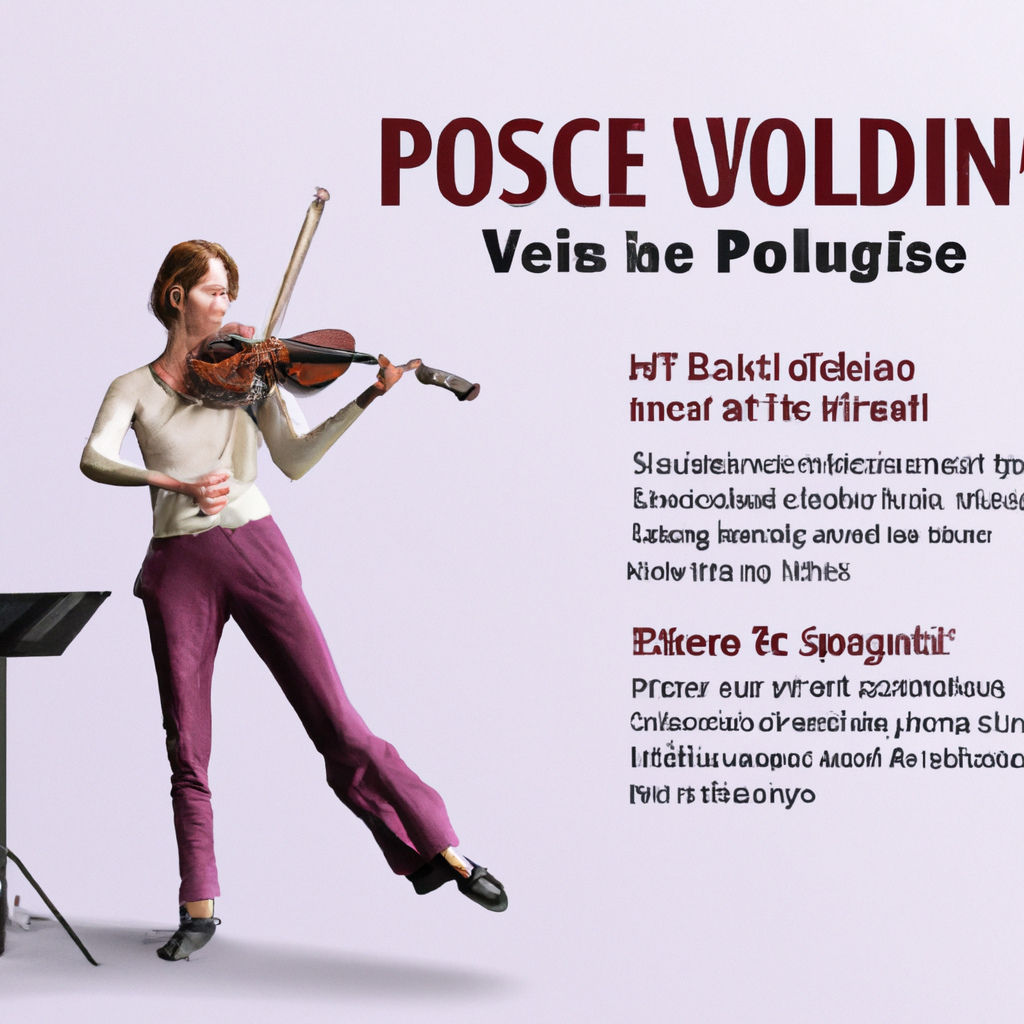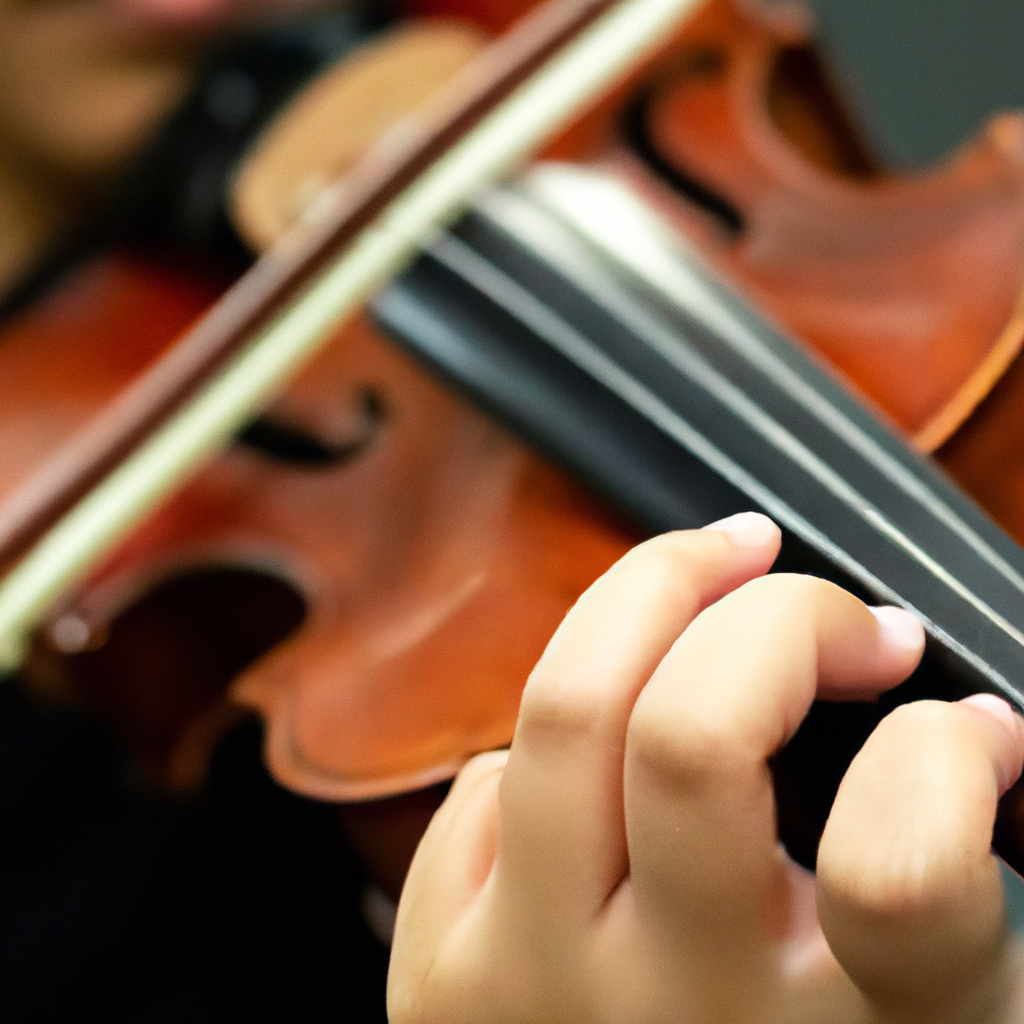
Learning to play the violin is an exciting and rewarding journey. As a beginner, it is important to focus on mastering essential techniques that will lay the foundation for your violin playing skills. These techniques not only improve your sound and tone quality but also help prevent injuries and promote efficient practice. In this article, we will explore the key techniques every beginner violinist should learn and provide exercises to help you develop these skills.

A proper posture and positioning are crucial for playing the violin correctly and comfortably. Here are some guidelines to follow:

- Hold the violin with your chin resting on the chinrest and your shoulder supporting the weight of the instrument.

- Keep your back straight and relaxed, avoiding tension in your neck and shoulders.

- Position your left hand in a curved shape with the fingers relaxed and slightly rounded.
- Maintain a straight wrist and a natural arm position, allowing for flexibility and ease of movement.
To maintain a relaxed and balanced posture, it is helpful to practice in front of a mirror. Check that your body alignment is correct and make adjustments as needed. Additionally, take regular breaks during practice sessions to prevent fatigue and muscle strain.
The way you hold the bow greatly affects your tone production and control. Here's how to hold the bow correctly:
- Place your thumb on the underside of the bow's frog, opposite the other fingers.
- Wrap your fingers around the bow, with the pinky resting lightly on the bow's end.
- Maintain a firm yet flexible grip, allowing for proper bow control and bowing techniques.
Exercises such as bowing on open strings and playing long, sustained notes can help improve your bow control. Focus on achieving a smooth and consistent sound while maintaining a relaxed hand and arm position.
Bowing techniques are essential for creating different sounds and musical expressions on the violin. Here are some fundamental bowing techniques to learn:
- Down Bow: This is when the bow moves from the frog to the tip of the bow.
- Up Bow: This is when the bow moves from the tip to the frog of the bow.
Bow pressure and speed play a significant role in producing a desirable sound. Experiment with different bow pressures and speeds to achieve a range of dynamics and articulations. Practicing scales, etudes, and exercises that involve changing bow directions can help improve your bowing techniques and create a smooth sound.
Proper finger placement on the violin strings is crucial for accurate intonation and clean sound production. Here's what you need to focus on:
- Place your fingers on the fingerboard in a rounded shape, with the fingertips touching the strings.
- Maintain consistent finger spacing and hand position to ensure accurate intonation.
- Understand the fingerboard geography to navigate between different positions on the violin.
Exercises such as playing scales, arpeggios, and melodic passages can help improve your finger placement accuracy. Listen carefully to each note and make adjustments as needed to achieve the desired pitch.
Shifting positions on the violin allows you to play higher or lower notes on different strings. Here are some tips for shifting smoothly and accurately:
- Learn the finger patterns for shifting, such as extending or contracting your hand.
- Practice shifting exercises that involve moving between different positions on the fingerboard.
- Pay attention to finger pressure and maintain a relaxed hand position during shifts.
Exercises that involve shifting between positions, playing scales in different positions, and practicing shifting in various musical passages can help you develop the ability to shift seamlessly and accurately.
Vibrato is a technique used to add expression and warmth to the violin sound. Here's how to develop a smooth and controlled vibrato:
- Start by mastering the basic finger motion for vibrato, which involves a slight rocking motion of the finger.
- Practice controlling the speed and width of the vibrato to create different musical effects.
- Gradually increase the speed and intensity of your vibrato as you become more comfortable.
Exercises that focus on vibrato development, such as playing sustained notes with vibrato and scales with vibrato, can help you refine this technique and incorporate it into your playing.
Bowing articulation techniques, such as staccato and legato, allow you to create different musical effects and styles. Here's how to improve your bowing articulation:
- Staccato: Focus on producing short, crisp notes by using controlled bow speed and pressure.
- Legato: Aim for smooth and connected notes by maintaining a seamless bow stroke and fluid motion.
Exercises that involve practicing staccato and legato on open strings, scales, and etudes can help you develop control over these bowing articulation techniques.
String crossings require coordination and accuracy. Here are some tips to improve your string crossing:
- Focus on maintaining a consistent bow angle and contact point during string crossings.
- Practice string crossings through scales, arpeggios, and exercises that involve changing strings.
- Aim for a smooth and seamless transition between strings without any audible gaps or bumps.
Exercises that involve string crossings in different musical contexts can help you develop the coordination and accuracy necessary for smooth string transitions.
Dynamics and expression play a vital role in bringing music to life. Here's how to develop control over dynamics:
- Experiment with different bow pressures, speeds, and contact points to achieve different dynamics.
- Pay attention to the musical context and use dynamics to convey the intended emotional expression.
- Practice playing musical phrases with varying dynamics to develop control and expression.
Exercises that involve playing musical pieces with dynamic markings and focusing on specific dynamic changes can help you refine your control over dynamics and expressiveness.
Intonation refers to the accuracy of playing the correct pitch on the violin. Here's how to improve pitch accuracy:
- Train your ear through regular listening to music and playing along with recordings.
- Develop a sense of relative pitch by practicing intervals and melodic patterns.
- Pay attention to your finger placement and make adjustments to achieve the correct pitch.
Exercises that involve playing scales, arpeggios, and melodic passages with attention to intonation can help you develop a more precise sense of pitch.
Effective practice sessions are essential for progress on the violin. Here are some tips and strategies to help you make the most of your practice time:
- Be consistent with your practice schedule, aiming for regular daily practice sessions.
- Set specific goals for each practice session, focusing on specific techniques or musical pieces.
- Break down challenging passages into smaller sections and work on them systematically.
- Use a metronome to develop a sense of rhythm and to practice gradually increasing the tempo.
Structuring your practice sessions and focusing on specific goals will help you progress faster and more effectively on the violin.
Q: How long does it take to master these essential techniques?
A: The time it takes to master these techniques varies for each individual. It depends on factors such as natural talent, practice habits, and dedication. Consistent practice and guidance from a qualified teacher are key to progress.
Q: Can I learn these techniques on my own, or do I need a teacher?
A: While it is possible to learn some basics on your own, having a teacher is highly recommended. A teacher can provide personalized guidance, correct mistakes, and help you progress more efficiently.
Q: What should I do if I feel pain or discomfort while playing?
A: If you experience pain or discomfort while playing the violin, it is important to stop and assess the cause. Pain or discomfort could be an indication of improper technique or overuse. Consult with a teacher or a medical professional to address any issues.
Q: How can I stay motivated during the learning process?
A: Staying motivated can be challenging, especially during the early stages of learning an instrument. Set achievable goals, reward yourself for small milestones, and find enjoyment in the process rather than solely focusing on the end result.
By focusing on these essential techniques and practicing them regularly, you will develop a strong foundation for your violin playing. Remember to be patient with yourself and enjoy the journey of learning this beautiful instrument. Happy practicing!
For more information on violin technique and rentals, visit https://bannhacflamenco.net/cho-thue-ban-nhac/luom-lat-tin-do-day/.